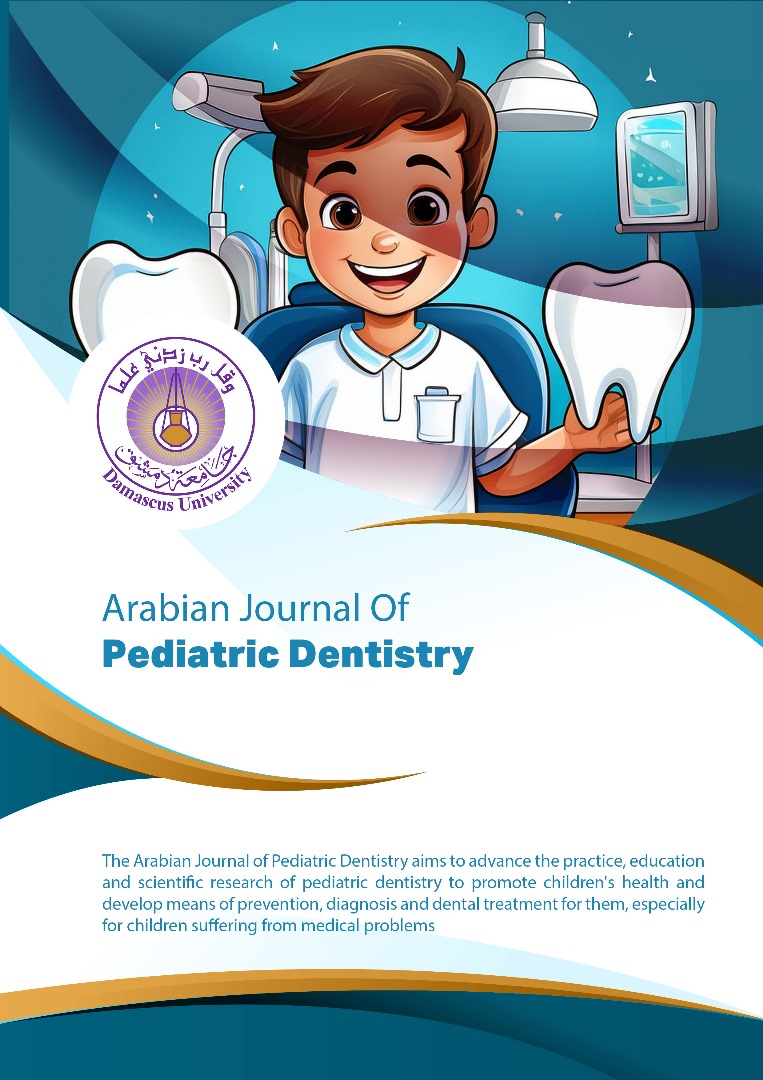تأثير العلكة الخالية من السكر على درجة حموضة اللعاب لدى الأطفال بعد تناول الحليب المحلى
الكلمات المفتاحية:
درجة حموضة اللعاب، الحليب المحلّى، علكة خالية من السكر، الإكزيلتول، السوربيتولالملخص
هدف البحث: هدفت هذه الدراسة لمراقبة تغيرات pH اللعاب بعد تناول عبوة من أنواع الحليب المحلّى والمنكه بالشوكولا ثم دراسة تغيرات pH اللعاب بعد استهلاك أحد أنواع العلكة الخالية من السكر والمحلاة بالإكزيلتول والسوربيتول والمتوافرة بالسوق التجارية عند الأطفال مختلفي الإصابة النخرية بعمر 5-3 سنوات بعد إجراء دراسة مخبرية للحليب للتأكد من حموضتة و كمية السكريات والبروتينات المضافة له.
المواد والطرائق: دراسة مخبرية تحليلية كيميائية لدراسة pH وكمية السكريات والبروتينات الموجودة بالحليب(حليب محلى منكّه بالشوكولا من شركة هوى الشام)، ودراسة مراقبة سريرية لـ30 طفلاً بعمر 5-3 سنوات لمعرفة التغير الحاصل في pH اللعاب بعد تناول أحد أنواع الحليب الصناعي المحلّى والمنكّه بالشوكولا ثم أثر تناول العلكة الخالية من السكر والمحلاة بالإكزيلتول والسوربيتول على الـpH.
النتائج: أدى تناول الحليب المحلى والمنكه بالشوكولا إالى انخفاض قيمة pH اللعاب بشكل دال إحصائياً ثم ارتفع بشكل سريع بعد تناول العلكة.
الاستنتاج: انخفضت قيمة pH اللعاب عن القيمة الراحية بعد تناول الحليب المحلّى والمنكّه بالشوكولا لكن لم تنخفض دون القيمة الحرجة(5.5)، أي يمكن اعتبار الحليب المستعمل في الدراسة مادة غير محدثة للنخر السني حتى إذا تم إضافة السكروز والمنكهات له. وكان للعلكة الخالية من السكر دوراً في رفع قيم pHاللعاب فوق القيم الراحية، أي كان لها دور إيجابي في الوقاية من النخر السني عند أطفال ما قبل المدرسة.

